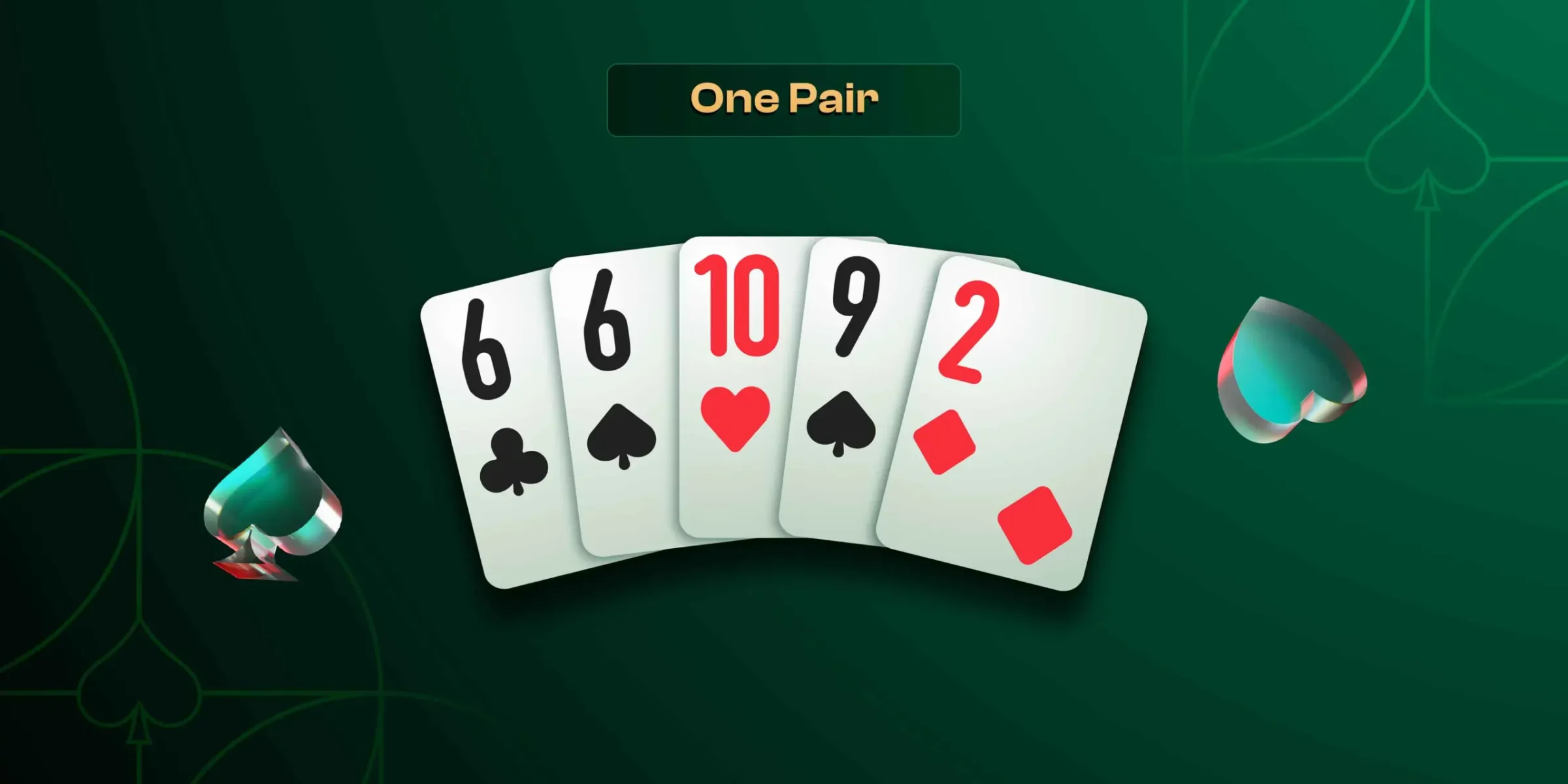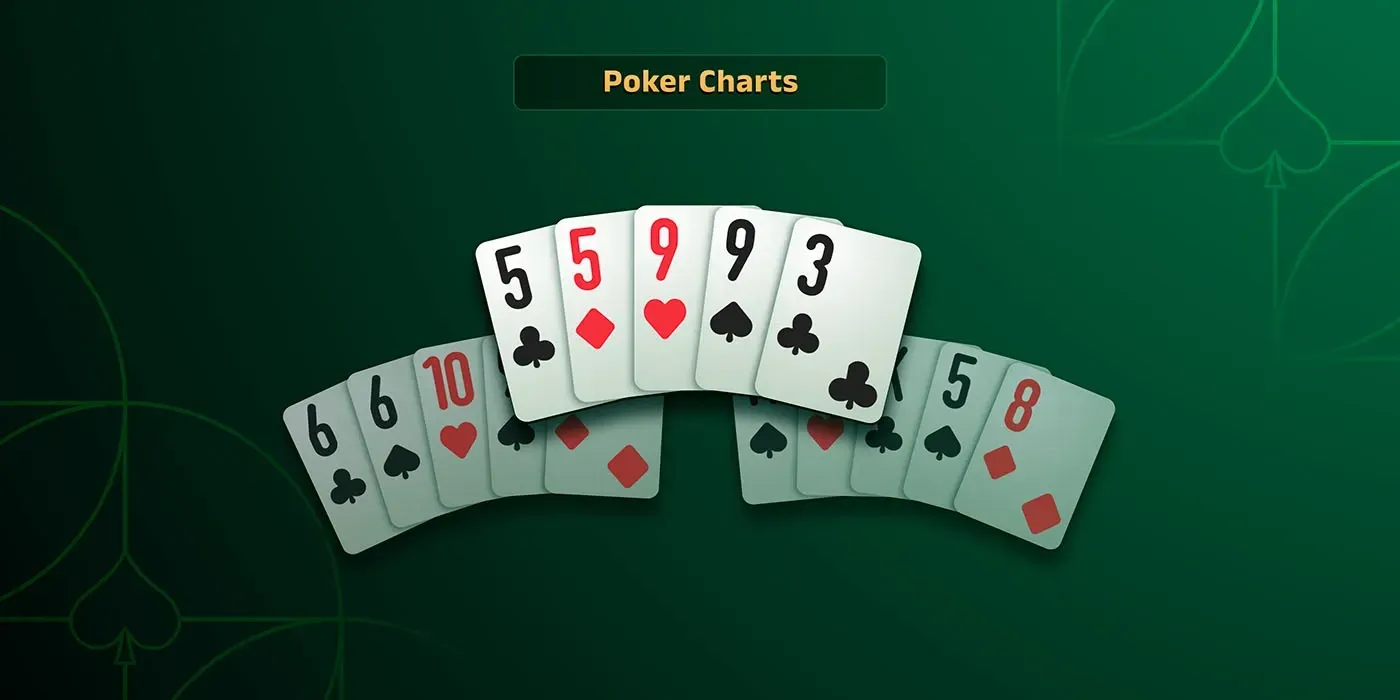
One Pair in Poker: Hand Ranking
The rules of poker are easy to understand but that's only half the job done. It's like saying that I know that if the ball crosses the boundary line in cricket without touching the ground, it's a six, but can you hit it every time? It's one thing to know the rules and another thing to play the game.
In poker, once you understand the rules, it's important to understand poker hand rankings and how you should play a hand. Here are the rankings:
In this blog, we'll understand what is a “one pair” and how to play it.
What is One Pair in poker?
Define one pair as a hand consisting of two cards of the same rank alongside three unmatched cards.
Provide a clear explanation of how one pair is formed and its significance in poker.
A pair in poker consists of two cards of the same rank. The rest of the cards need to be unmatched. Here are a few examples:
A♥️A♦️K♠️J♣️7♣️
7♣️7♥️9♦️K♠️5♥️
As you can see above, it's a pair of aces in the first hand, and a pair of 7s in the second.
Where does one pair rank in poker?
Poker is a game of probabilities. The least probable hand is the most powerful one, as the probability keeps getting higher, the hand starts ranking lower.
| Hand | Probability |
|---|---|
| Royal Flush | 0.000154% |
| Straight Flush | 0.00139% |
| Four of a Kind | 0.02401% |
| Full House | 0.1441% |
| Flush | 0.1965% |
| Straight | 0.3925% |
| Three of a Kind | 2.1128% |
| Two Pair | 4.75359% |
| One Pair | 42.2569% |
| High Card | 50.1177% |
One pair is the second least powerful hand that you can have and is ranked 9th on the list. But this doesn't mean that you can't win with a pair. Remember, that the probability of just getting a high card is slightly higher than 50%, which means half the time no one will have a hand better than just a high card.
Example Hands:
Let's understand more about one pair with the example of a hand:
Example 1 (One pair on river)
Hole cards (cards that you get): 10♠️ 7 ♥️
Flop: A♣️ Q♦️ 9♠️
Turn: 5♠️
River: 7♦️
Your best combination: 7 ♥️7♦️A♣️ Q♦️10♠️
Example 2 (One pair on turn)
Hole cards: A♦️ 9♦️
Flop: K♥️J♦️7♣️
Turn: A♣️
River: 3♥️
Example 3 (One pair on flop)
Hole cards: 10♣️4♠️
Flop: 10♥️7♦️K♣️
Turn: J♠️
River: 2♠️
Example 4 (Pocket pair)
Hole cards: 6♦️6♠️
Flop: 7♥️9♥️3♣️
Turn: K♦️
River: Q♣️
Strategic Insights:
Here are a few ways you can play a one pair hand:
One pair is good enough
Remember, there’s nearly a 50% chance that the other players will have only a high card. So having one pair is not a bad deal.
The fewer the players, the higher the probability
The disadvantage with having a pair is that the probability of you winning decreases as the number of players on the table increases. If there are 4 players on the table, the probability of you having the best hand will be lower than a 6-player table.
Check the cards and betting pattern
- Make sure there are no flush draws or straight draws.
- Check for two cards of the same value in the community cards.
- Observe the betting pattern of other players. If a player has been betting aggressively from the start, there’s a high probability that they have a better hand.
The most important factor when playing with just a pair is to check whether you have a high-value pair or a low-value one. For example, a pair of twos is too weak of a hand to depend on.
One pair poker probabilities
Here are the probabilities of getting a pair in poker:
Hold ’em probabilities
When all the community cards are open, the probability of getting a pair are around 43%.
Pot Limit Omaha Probabilities
Odds of being dealt a pair are around 30%. And the odds keep on increasing as the community cards are opened.
Common mistakes and pitfalls
Here are some common mistakes that players make when having a one pair:
- Don’t get overconfident with a small pair. If you have a pair that’s below 7, there’s a high probability that someone has a better one.
- Make other players fold. If you are the last to move on the table and everybody else has decided to “check”, make sure you place a bet. This might make players that have a flush draw or a straight draw fold and increase your chances of winning.
Conclusion
One pair is not a bad hand to have. You just need to practice and perfect the way to play it. The best way to win with a one pair is to make the right bets before and after the flop, don’t give other players the chance to see more community cards.
Explore other hands in poker:
| Royal Flush | Full House | Three of a Kind |
| Straight Flush | Flush | Two Pair |
| Four of a Kind | Straight | High Card |
FAQs on One Pair in Poker
1. What is one pair?
When you have two cards of the same value in your hand, then it is called a pair or “one pair”.
2. What is the poker ranking of a pair?
A pair is the 9th most powerful hand in poker. It is above “high card” and ranks below “two pair”.
3. What is the probability of getting a pair?
The probability of getting a pair in Texas hold ‘em is 43%.
4. Which pair is the most powerful?
The ranking of a pair depends on its value. A pair of aces ranks first, followed by a pair of kings and so on.
Related Post
 Call support
Call support RNG certified
RNG certified Responsible gaming
Responsible gaming Safe & secure payments
Safe & secure payments ISO certified company
ISO certified company


